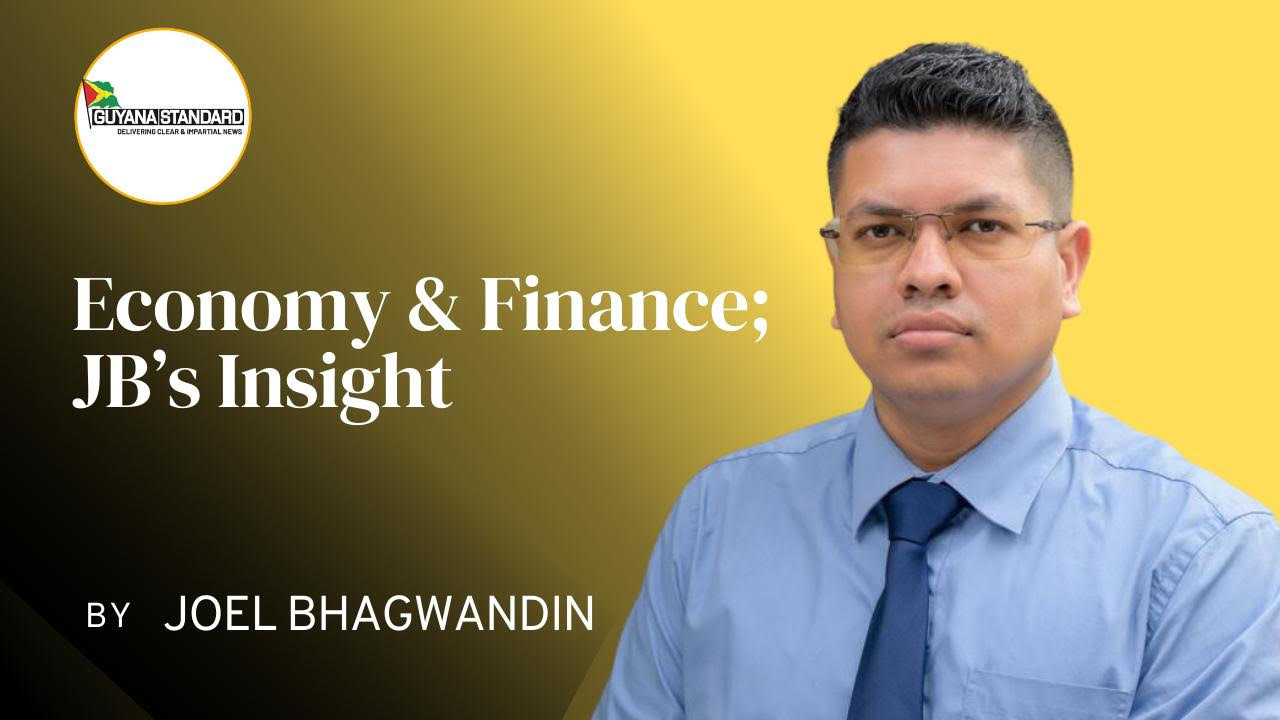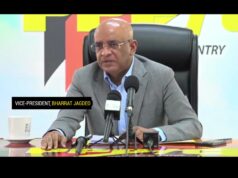Summary
It is worth noting at the outset that Tom Sanzillo is associated with an organization, namely the IEEFA, that is funded by renewable energy advocates globally. And accordingly, the work of the organization by Tom Sanzillo and his colleagues are often skewed against multinational oil companies, especially ExxonMobil.
Pursuant to the terms and conditions of the Production Sharing Agreement (PSA), the Environmental Act, inter alia, the Environmental Permit, there is absolutely no ambiguity that it is XOM/EEPGL and its co-ventures’ primary responsibility to bear the cost of any environmental liabilities. As illustrated herein, the analysis of Tom Sanzillo evidently ignored many key variables and considerations that in effect, rendered his conclusion that Guyana risks economic wipeout an unsubstantiated view.
Background
Reference is made to a Kaieteur News article in its May 27th, 2023, edition, where Sanzillo is quoted as saying “Guyana risks economic decimation as it would leave to pick up the bill for an oil spill from XOM’s operations.” The analyst, however, failed to justify how he arrived at that conclusion―and he also failed to consider a multiplicity of factors that would have lend to him forming a more informed professional view on the issue.
Readers may recall that Tom Sanzillo and this author had engaged in numerous debate on a variety of issues in Guyana’s oil and gas industry over the last few years. And on every occasion, I had demonstrated his mediocre and flawed analyses. After a long time, he has once again re-emerged at the request of a certain newspaper publisher, to comment on the recent High Court’s ruling in respect of the “parent company guarantee” that ExxonMobil (XOM) and its co-venture partners need to provide.
Discussion and Analysis
Pursuant to the terms and conditions of the Production Sharing Agreement (PSA), the Environmental Act, inter alia, the Environmental Permit, there is absolutely no ambiguity that it is XOM/EEPGL and its co-ventures’ primary responsibility to bear the cost of any environmental liabilities. So, for the readers benefit, hereunder stated are some of the key variables and factual, legal, and technical considerations that Tom Sanzillo completely ignored in his analysis:
i) Article 28 of the PSA speaks to the Contractor’s social responsibility and protection of the environment. Article 28.1 states that “in accordance with the Environmental Protection Act, 1996, the Contractor shall obtain an environmental authorization as required from the Environmental Protection Agency (EPA) and comply with the provisions of that EPA in relation to any activity of this Agreement that is governed by the EPA Act… Article 28.3 states “in furtherance of regulation 6 of the Regulations in the conduct of Petroleum Operations, the Contractor shall take necessary and adequate precautions, in accordance with good international industry practice, against pollution and for the protection of the environment and the living resources of the rivers and sea.”…Article 28.6 states that “If the Contractor does not act promptly pursuant to Article 28.4 so as to control or clean up any pollution within a reasonable period specified by the Minister, the Minister may, after giving the Contractor reasonable notice in the circumstances, take any actions which are necessary in accordance with good international petroleum industry practice and the reasonable costs and expenses of such actions shall be borne by the Contractor.”
ii) In accordance with the Environmental Protection Act Section 31 (1) states that “the Agency may include in any environmental authorization a requirement that the person to whom that environmental authorization is issued shall provide financial assurance to the State for any one or more of the following”,
a) the performance of any action or compliance with the condition specified in any environmental authorization;
b) the provision of alternate water supplies to replace those that the Agency has reasonable grounds to believe are or are likely to be contaminated or otherwise inferred with by the works to which the environmental authorization relates; and
c) measures appropriate to prevent adverse effects upon and following the cessation of closing of the works.
d) Section (2) of the Environmental Act states that… “A requirement under subsection (1) shall specify the amount of the financial assurance and may provide that the financial assurance may be provided, reduced, or released in stages specified in the environmental authorization”.
iii) As of FY 2022, the total assets of the Guyana operations (EEPGL, HESS and CNOOC) stood US$19 billion. As such, the value of the total assets plus the parent company guarantee of US$2 billion and the insurance coverage of US$600 million, altogether amounts to US$21.6 billion in total coverage for any environmental liability that may occur at this time.
iv) More importantly to note is that the insurance coverage and the parent company guarantee sum is subject to revision over time. That is to say, as production increases, the number of FPSOs will increase, which means that the potential liabilities will also increase proportionately. With this in mind, since it is expected that by 2030 there will be a total of 10 FPSOs operating, resulting in an increase of total daily production of approximately 1 million barrels per day, up from 350,000 barrels per day currently; an upward revision of the parent company guarantee as well as the insurance coverage, relative to this level of increased production can be anticipated.
v) It should be noted as well that the total assets and projected future cash flow will grow substantially by billions of U.S dollars, thereby amounting to adequate financial coverage (both in the form of liquid and illiquid assets) to cover any potential environmental contingent liability. For example, by 2030 when daily production is ramped up to 1 million barrels per day, at an average price of US$60 per barrel, average annual revenue will amount to about US$21.6 billion, and total assets is estimated to reach in excess of US$100 billion by then.
It is worth noting that Tom Sanzillo is associated with an organization, namely the IEEFA, that is funded by renewable energy advocates globally. And accordingly, the work of the organization by Tom Sanzillo and his colleagues are often skewed against multinational oil companies, especially ExxonMobil. Below is an excerpt cited from an article published June 1st, 2022, by this author exposing the IEEFA’s / Tom Sanzillo’s agenda.
In the press release by Adani in August 2019, the company stated that the:
“IEEFA is known for publishing alarmist papers that attempt to discredit the fossil fuel industry using flawed analysis in order to achieve its stated aim of transitioning to renewable energy. Its campaign to discredit Adani’s Carmichael Project began in 2013 and has involved the publication of a number of papers containing false claims and associated publicity stunts. IEEFA has known associations with left-wing activist groups, including acting as a spokesperson in campaign videos for Get Up! which received $495,000 from the anti-fossil fuel activist group Sunrise Project last year to advance its anti-coal agenda.” Adani further urged in its statement that “while everyone is entitled to their own opinion, it is important that commentators declare their personal and financial interests upfront when discussing issues so as not to give any misrepresentations of independence and impartiality”. Adani’s full response to the IEEFA can be accessed here. [https://www.bravus.com.au/fact-check-adani-responds-to-ieefa-paper-on-financial-statements/](https://www.bravus.com.au/fact-check-adani-responds-to-ieefa-paper-on-financial-statements/ “”).
And for ease of reference, here is the link to the referenced article by this author ([https://guyanachronicle.com/2022/06/01/spherex-analytics-article-3-2022/](https://guyanachronicle.com/2022/06/01/spherex-analytics-article-3-2022/ “”)).
Concluding Remarks
As illustrated herein, the analysis of Tom Sanzillo evidently ignored many key variables and considerations that in effect, rendered his conclusion that Guyana risks economic wipeout an unsubstantiated view.
About the Author
Joel Bhagwandin is a public policy/financial analyst―and an experienced financial professional with more than fifteen years’ experience in the financial sector, corporate finance, financial management, consulting, and academia. He is actively engaged in providing insights and analyses on a range of public policy, economic and finance issues in Guyana over the last six years.
He has authored more than 300 articles covering a variety of thematic areas. Joel has also written extensively on the oil and gas sector. (Author’s professional profile on LinkedIn can be accessed here: [https://www.linkedin.com/in/joel-bhagwandin-57481470/.)](https://www.linkedin.com/in/joel-bhagwandin-57481470/.) “”)













